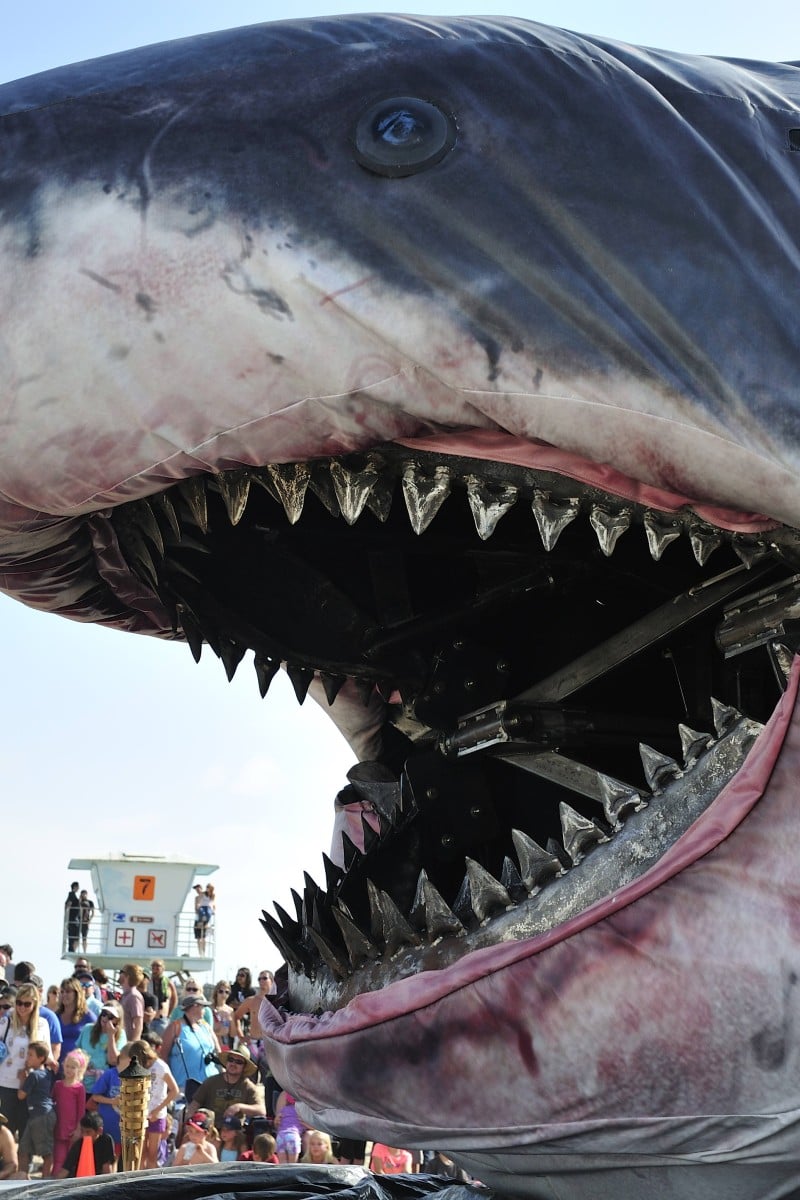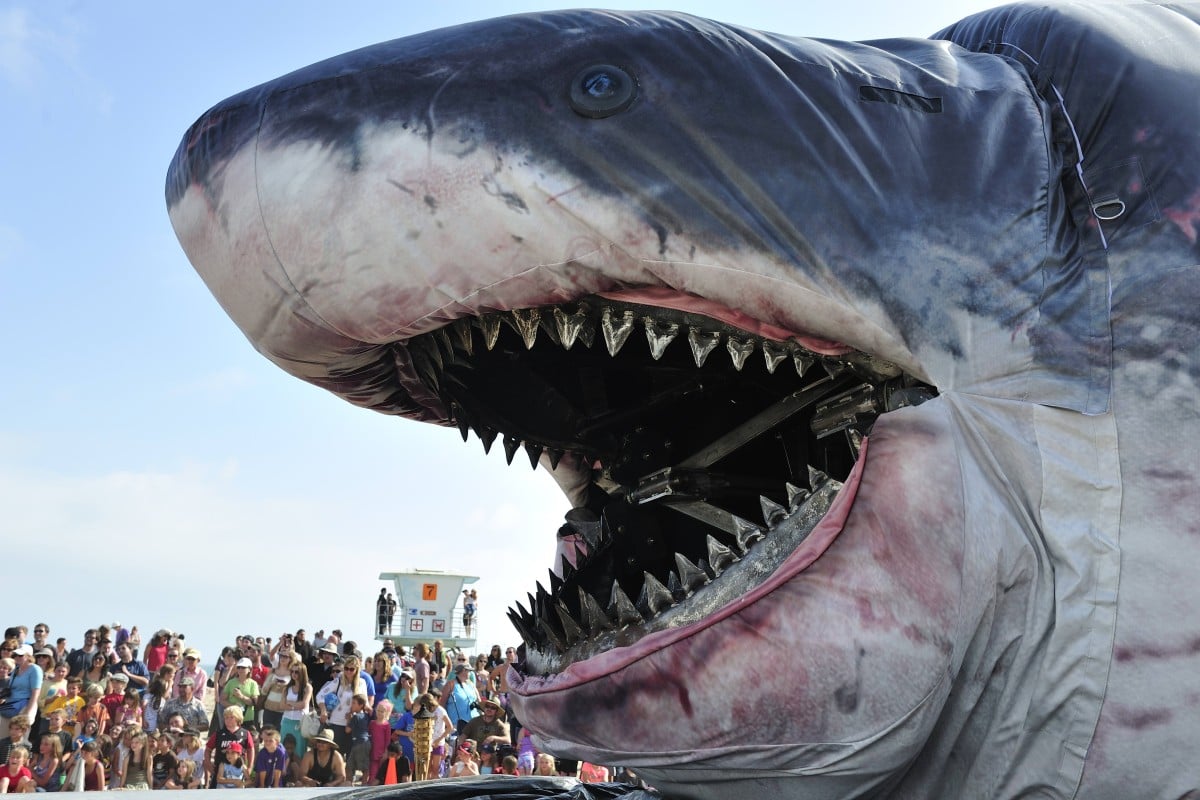
Most sharks have the ability to detect electrical fields, while one takes bites out of its prey without killing it so it can feed again later
 A life-size model of a megalodon shows us how big the prehistoric species is thought to have been.
A life-size model of a megalodon shows us how big the prehistoric species is thought to have been.Sharks have always been just as fascinating to us as they are frightening, as the long line of shark movies and documentaries going all the way back to Jaws (1975) is proof of. So with the latest addition to this line, The Meg, now in cinemas, it seems like a good time to present five things you (probably) didn’t know about sharks.
The star of the film
Since The Meg is about a prehistoric species of shark, it only seems right to talk a little bit about it here. Carcharodon megalodon (often known simply as Megalodon) was a gigantic relative of the modern great white shark that could grow up to 20 metres long. Its fossils have been found all over the world, from Peru to Japan. Being so large, it mostly hunted whales, although young sharks are thought to have had mostly fish-based diets.
It went extinct around 2.6 million years ago, possibly due to climate change caused by the Ice Age, which lowered sea temperatures, restricting prey numbers.
‘The Meg’ or ‘The Meh’? Jason Statham's shark summer blockbuster lacks the teeth of 'Jaws' [Review]
Other oldies
Megalodon may be the most well-known prehistoric shark, but it is far from the only one. Sharks have been around for more than 400 million years, and in that time, a whole host of species have come and gone. Some of these species looked very similar to modern sharks but others were truly weird. The Jurassic shark, Hybodus, had a pair of small horns on its head while another species, Stethacanthus, had a dorsal fin shaped a lot like an iron.
Weirdest of all was probably Helicoprion (bottom), which had a lower jaw shaped like a buzz saw and no teeth at all in its upper jaw. Scientists believed that it used these bizarre mouthparts to slice up squid as it swam.
Forty years after 'Jaws,' summer still means lots of shark movies and TV shows
Living metal detectors
As well as a powerful sense of hearing and smell, sharks also have the ability to detect the electrical fields which all animals produce naturally. These fields are detected by special sensory organs called the ampullae of Lorenzini, which are largely concentrated around the shark’s head. In hammerhead sharks, these organs are spread all around the "hammer", allowing the shark to use it as a sort of "metal detector" by swinging its head from side to side above the sand, helping to find its favourite food of stingrays in the sand.
Freshwater sharks
Not all sharks live in the sea. One species, the bull shark, can also survive in fresh water and has been found very far up several major rivers including the Mississippi in the United States, the Amazon in South America, and the Zambezi in Africa. The main reason for their doing this appears to be to so they can give birth in a safe environment for their young, as baby bull sharks have a much lower tolerance for salt water than adults. Being away from the adults may also reduce their chances of being eaten by them.
We must stop the cruel and outdated practice of hunting sharks for shark fin soup
There also some species of shark that live full-time in fresh water, but little is currently known about them and, unlike the bull shark, they are not considered to be dangerous to humans.
Movable feast
Not all sharks kill the animals they feed on. The cookiecutter shark, a small species about 43 to 56 centimetres long, is so named because it feeds by biting mouthfuls of flesh out of larger animals. This leaves a circular "cookie-shaped" hole in the victim’s body but does not kill it, allowing the shark to return to feed again later. Victims can include dolphins, whales, seals, stingrays, large fish and even other sharks.